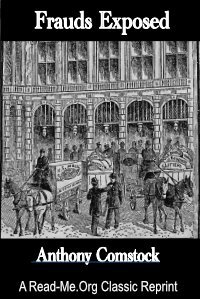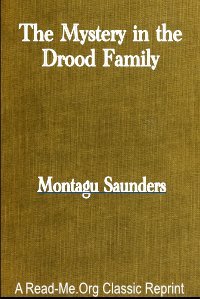By Aase Villadsen, Nicolás Libuy, Emla Fitzsimons
This project examined whether adverse childhood experiences (ACEs), positive childhood experiences (PCEs) and the levels of violent crime in children’s neighbourhoods are associated with children’s involvement in violence. Previous research suggests that ACEs are associated with involvement in violence, while PCEs are associated with decreased risk of involvement in crime and violence. There is some evidence that the relationship between ACEs, PCEs and involvement in violence is affected by the amount of violent crime in the local area. This study explored whether these factors are associated with three violence outcomes, measured at ages 14 and 17: assault perpetration, the carrying or using of a weapon and gang involvement. It primarily used data on around 14,000 children from the Millennium Cohort Study (MCS), a study that is tracking a cohort of children born around the millennium. It also used police-recorded crime data to understand the amount of violent crime in the local area. The ACEs examined by this study were: having a single parent; experiencing parental breakup; domestic violence; verbal abuse; physical abuse; parental alcohol abuse; parental drug use; parental mental health issues; poor parental relationships; poor parent-child relationship; and, having a parent with a long-term disability/illness. The list of PCEs included: having low-risk peers; positive peer experiences; good school connectedness; positive teacher-child relationships; participation in activities and hobbies; living in a safe neighbourhood; and feeling safe in the playground. Key findings : A higher number of adverse childhood experiences (ACEs) is associated with an increased risk of children engaging in violence. Having two or more ACEs compared to none increased the risk of assault perpetration by 19%, weapon involvement by 57% and gang involvement by 61%. Having six or more ACEs increased the risk of assault perpetration by 45%, weapon involvement by 150% and gang involvement by 154%. The combination of ACEs associated with the highest risk included parental drug use, single parenthood, domestic violence, physical abuse and long-term parental disability or illness. A higher number of positive childhood experiences (PCEs) is associated with a decreased risk of children engaging in violence. Having three to four PCEs compared to zero to two PCEs reduced the risk of assault perpetration by 12%, weapon involvement by 33% and gang involvement by 28%. Having six to seven PCEs reduced the risk of assault perpetration by 35%, weapon involvement by 66% and gang involvement by 59%. The combination of PCEs associated with the lowest risk included low-risk peers, good school connectedness, positive teacher-child relationship and positive peer experiences. The link between ACEs and violence was reduced when children also had a high number of PCEs. Having high numbers of PCEs partially offset the risks associated with ACEs. Children who had both a high number of ACEs and PCEs, compared to those with a high number of ACEs and low PCEs, had a lower risk of involvement in violence. For example, among children with three or more ACEs, the risk of assault perpetration fell by 22%, weapons involvement by 49% and gang involvement by 39% for those who also had five or more PCEs. ACEs and PCEs better explain violence involvement than neighbourhood crime rates. Children growing up in high-violence neighbourhoods were more vulnerable to involvement in violence. For example, the likelihood of weapons involvement was 62% higher for children growing up in the 20% most violent areas. However, neighbourhood crime levels were no longer associated with violence perpetration once characteristics, including ACEs and PCEs, were taken into account. There is some evidence that differences in experiences of violence by ethnicity can be explained by family socioeconomic characteristics and exposure to ACEs and PCEs. Black children had higher rates of assault perpetration (53.3% and 47.6%, respectively) than White children (41.7%). This difference in assault rates disappeared after controlling for socioeconomic family characteristics and ACEs and PCEs, suggesting much of the difference can be explained by differences in exposure to these family factors. However, this analysis was limited by a small sample size of children from individual ethnic minority groups and is, therefore, not as secure as some of the other findings. Interpretation and implications This study provides valuable information about the relationship between ACEs, PCEs, neighbourhood safety and children’s involvement in violence. It is one of only a few studies to present evidence from an English or Welsh context. Insights from this study should be combined with findings from other research to identify and support the children who are most vulnerable to involvement in violence. These findings should be interpreted carefully. Although the study looked at whether factors are associated with violence, it cannot confirm whether these factors caused violence. For example, children who experienced physical abuse were more likely to commit violence, but we can’t rule out the possibility that this relationship is explained by another factor. Perhaps children who experienced abuse are also more likely to experience other hardships, which are the real drivers behind their involvement in violence. While this study used statistical techniques to try to rule out some other potential drivers, it was not able to capture all of these. The strengths of this study included its use of a large nationally representative sample, the use of statistical methods that deal with missing data and maintain a representative sample and the fact that it found similar results across several additional analyses and robustness checks. The results of the study should be considered alongside its limitations: • Sexual abuse and the involvement of household members in crime are commonly described as ACEs but were not available in the MCS data set and were not examined in this study. • The study relied on police-reported crime data to measure neighbourhood violent crime. However, much crime goes unreported to the police, especially in deprived areas. The findings on neighbourhood violence are less secure as a result. • The analyses examining more serious types of violence in smaller subgroups of children, such as children from smaller ethnic groups, have smaller samples and are less precise
London: Youth Endowment Fund, 20225. 227p.








